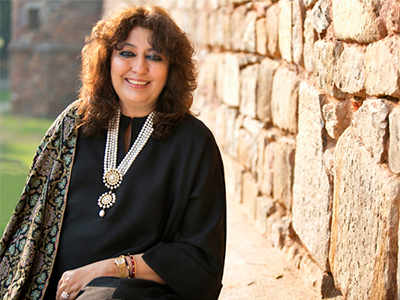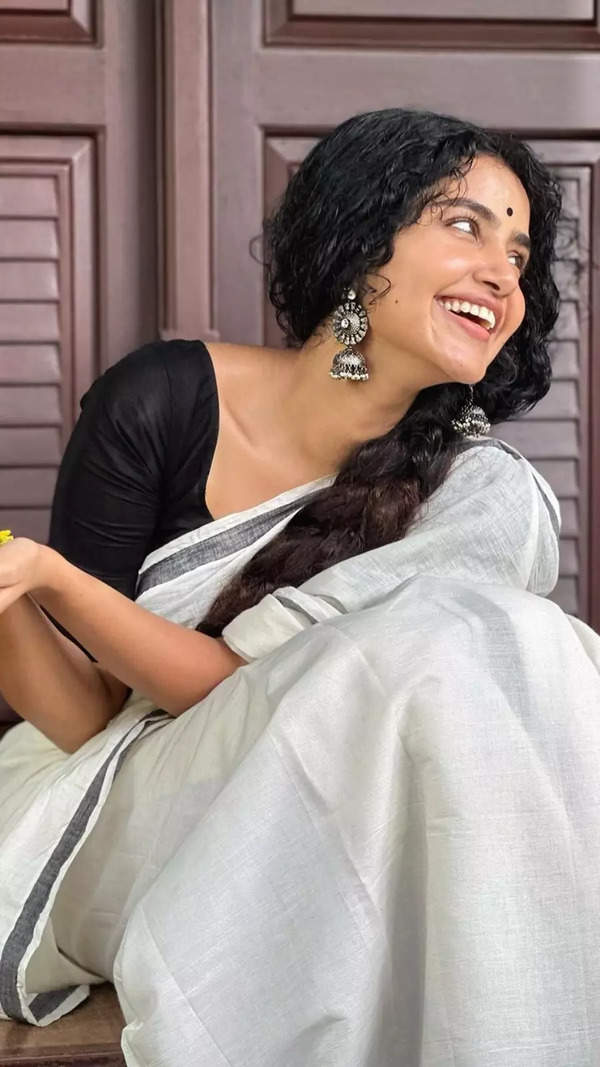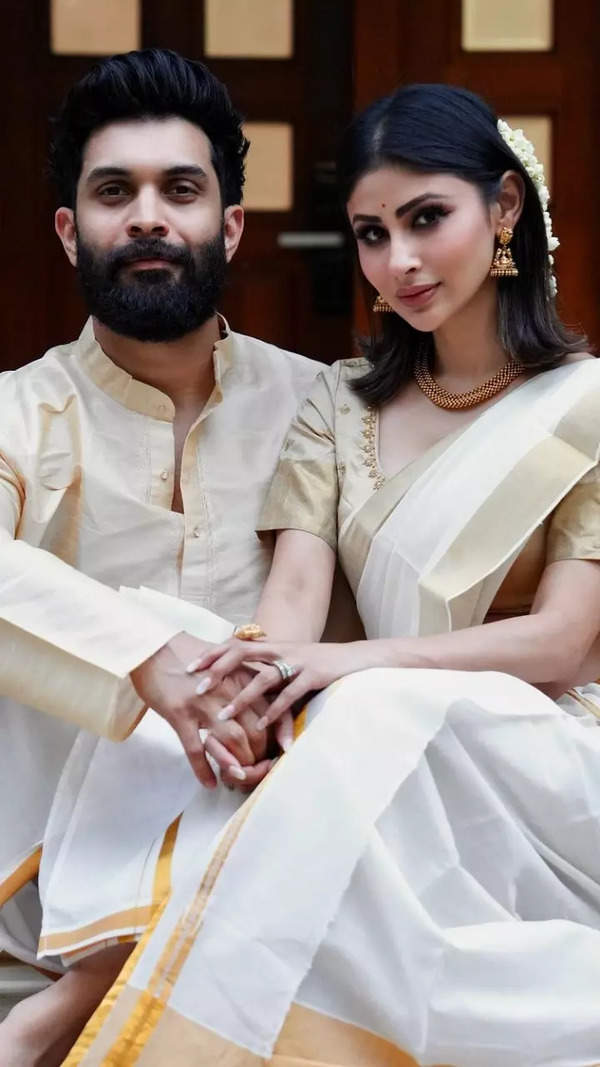Trending
This story is from August 26, 2015
Madhu Jain previews new project 'Rare Textiles of Gujarat'
It's been 28 years since designer Madhu Jain embarked on a journey to hone her fascination for the rich traditional art of Indian craftsmanship.

It's been 28 years since designer Madhu Jain embarked on a journey to hone her fascination for the rich traditional art of Indian craftsmanship.
An interest she tells is 'inborn, cannot be cultivated', is clearly reflected in all of her works - past and present.
The designer who is credited for re-introducing Dhaka muslin into Indian textile trend, among other feats, yesterday launched her latest project, "The Rare Textiles of Gujarat - A historical perspective" at FIO, New Delhi.Present at the launch were close friends Shaila Habibullah and Maneka Gandhi who kickstarted the project. Guests at the evening soiree were treated to an exclusive preview of what's in store.


Here we are some excerpts from our conversation with designer Madhu Jain
On what keeps her going
MJ: I've got textiles in my blood. I inherited it from my father who owned some of the most beautiful houses in India. His houses were far ahead of his time. They were filled with the most wonderful textile and artifacts from all over the world - Irish, Belgian chandelier, Persian carpets. So I developed my sense of style just by watching and observing him. I feel it's something inborn, it's something which can't be taught. You have to observe and I'm not technically trained. This is a natural-born flair which has taught me how to hone my design sensibility.
Is the fashion industry letting the rich art work down?
MJ: Anything which is marketed well, packaged well does well. It has to be marketed well, packaged well, presented well. Like 15 years ago, we picked up doing Kalamkari. I picked up this girl from a small crafts mela and I started working with her and Kalamkari. There is not a single platform where we did not use Kalamkari. And today everybody wears Kalamkari, we used it in CWG opening ceremony, also for the Singapore Fashion Week. We used it everywhere. And also celebrity endorsement is much required.
I want to do the same with these textiles I am working on from Gujarat.
On the relevance of eco-friendly fashion
MJ: We introduced Bamboo in India in 2003 for the first time. Infact I got an award of excellence from FICCI for introducing bamboo as an alternative fibre. I think it is always very distinct using alternative fibre because you have to keep on moving ahead and experimenting. You never know what looks good with what. For instance 'bamboo chanderi' with intricate mirror work will make a wonderful combination. Bamboo is the most versatile fabric as you have different variation. You have bamboo khadi, bamboo silk, bamboo chanderi...
On what makes ikkat her signature look
MJ: Ikkat never gets spoilt, it has a long durability unlike any other textile. My first love are these rare textiles from Gujarat. I want to thoroughly do a research on them before I can call it my swansong in fashion industry.
On her ultimate muse
MJ: Maneka Gandhi. Her design sensibility is very similar to mine. I like to dress very simple so does she. My clothes are comfort based and she understands that.
Work that she's most proud of
MJ: My work with BRAC in Bangladesh, where we revived Nakshikantha I'm most proud of.
Word of advice for the young designers
MJ: Our country has a 200 year old rich textile. We should look inwards and look towards it for inspiration rather than aping the west.
On why does Madhu Jain not show at fashion weeks
MJ: Because my work is very serious. I don't think my work is very show material. It's more of installations and exhibitions. Like here I'm taking people around and explaining them about the textile. It is very personal to me.
Take a look at the intricate rich textile works from Gujarat that were on display at the launch
Art work: Sindhi Tanka Embroidered Saree (left); Dupatta with Suf Embroidery (right)
Sindhi Tanka embroidery is native to Sindh, Kutch, and Kathiawar. This interlacing embroidery technique is traditionally done with brightly coloured silken floss or twisted silk or cotton yarn.
The Suf embroidery also uses interlacing stitches, and patterns are typically geometric in shape. Suf embroidery is valued for its deftness in keeping the warp and weft of the fabric in mind when wielding the needle. Every single stitch, which is done without a pre-drawn design, is counted from the back of the fabric to ensure symmetry.

Art work: Rabari Embroidery
Unique to the nomadic Rabaris of Kutch, this Central Asia inspired motif intersperses mirrors through a network of chain stitch.

Art work: Rabari Motif Dupatta with Bead Tassels
This traditional Rabari embroidered dupatta is trimmed with bead edging to give it added movement and fluidity that mimics the nomadic lives of the Rabaris.

Art work: Banni Embroidery
Bright threads and bold patterns characterise Banni embroidery, which originated in Gujarat’s semi-desert region of Banni. This handbag blends the embroidery with small mirrors, a combination favoured by the Jats of that region.


Art work: Mirror Work
This length of textile is exclusively devoted to the famous Shisha or mirror work, a decorative embellishment that lends drama to any outfit.

An interest she tells is 'inborn, cannot be cultivated', is clearly reflected in all of her works - past and present.
The designer who is credited for re-introducing Dhaka muslin into Indian textile trend, among other feats, yesterday launched her latest project, "The Rare Textiles of Gujarat - A historical perspective" at FIO, New Delhi.Present at the launch were close friends Shaila Habibullah and Maneka Gandhi who kickstarted the project. Guests at the evening soiree were treated to an exclusive preview of what's in store.

Calling the launch 'a very,very special day', the designer remarked, "I will be finally realising my ultimate dream of working on my pet project. It's a new start...a new beginning.., preparing myself for lots and lots of hard work and travel through the interiors of Gujarat."

Here we are some excerpts from our conversation with designer Madhu Jain
On what keeps her going
MJ: I've got textiles in my blood. I inherited it from my father who owned some of the most beautiful houses in India. His houses were far ahead of his time. They were filled with the most wonderful textile and artifacts from all over the world - Irish, Belgian chandelier, Persian carpets. So I developed my sense of style just by watching and observing him. I feel it's something inborn, it's something which can't be taught. You have to observe and I'm not technically trained. This is a natural-born flair which has taught me how to hone my design sensibility.
Is the fashion industry letting the rich art work down?
MJ: Anything which is marketed well, packaged well does well. It has to be marketed well, packaged well, presented well. Like 15 years ago, we picked up doing Kalamkari. I picked up this girl from a small crafts mela and I started working with her and Kalamkari. There is not a single platform where we did not use Kalamkari. And today everybody wears Kalamkari, we used it in CWG opening ceremony, also for the Singapore Fashion Week. We used it everywhere. And also celebrity endorsement is much required.
I want to do the same with these textiles I am working on from Gujarat.
On the relevance of eco-friendly fashion
MJ: We introduced Bamboo in India in 2003 for the first time. Infact I got an award of excellence from FICCI for introducing bamboo as an alternative fibre. I think it is always very distinct using alternative fibre because you have to keep on moving ahead and experimenting. You never know what looks good with what. For instance 'bamboo chanderi' with intricate mirror work will make a wonderful combination. Bamboo is the most versatile fabric as you have different variation. You have bamboo khadi, bamboo silk, bamboo chanderi...
On what makes ikkat her signature look
MJ: Ikkat never gets spoilt, it has a long durability unlike any other textile. My first love are these rare textiles from Gujarat. I want to thoroughly do a research on them before I can call it my swansong in fashion industry.
On her ultimate muse
MJ: Maneka Gandhi. Her design sensibility is very similar to mine. I like to dress very simple so does she. My clothes are comfort based and she understands that.
Work that she's most proud of
MJ: My work with BRAC in Bangladesh, where we revived Nakshikantha I'm most proud of.
Word of advice for the young designers
MJ: Our country has a 200 year old rich textile. We should look inwards and look towards it for inspiration rather than aping the west.
On why does Madhu Jain not show at fashion weeks
MJ: Because my work is very serious. I don't think my work is very show material. It's more of installations and exhibitions. Like here I'm taking people around and explaining them about the textile. It is very personal to me.
Take a look at the intricate rich textile works from Gujarat that were on display at the launch
Art work: Sindhi Tanka Embroidered Saree (left); Dupatta with Suf Embroidery (right)
Sindhi Tanka embroidery is native to Sindh, Kutch, and Kathiawar. This interlacing embroidery technique is traditionally done with brightly coloured silken floss or twisted silk or cotton yarn.
The Suf embroidery also uses interlacing stitches, and patterns are typically geometric in shape. Suf embroidery is valued for its deftness in keeping the warp and weft of the fabric in mind when wielding the needle. Every single stitch, which is done without a pre-drawn design, is counted from the back of the fabric to ensure symmetry.

Art work: Rabari Embroidery
Unique to the nomadic Rabaris of Kutch, this Central Asia inspired motif intersperses mirrors through a network of chain stitch.

Art work: Rabari Motif Dupatta with Bead Tassels
This traditional Rabari embroidered dupatta is trimmed with bead edging to give it added movement and fluidity that mimics the nomadic lives of the Rabaris.

Art work: Banni Embroidery
Bright threads and bold patterns characterise Banni embroidery, which originated in Gujarat’s semi-desert region of Banni. This handbag blends the embroidery with small mirrors, a combination favoured by the Jats of that region.


Art work: Mirror Work
This length of textile is exclusively devoted to the famous Shisha or mirror work, a decorative embellishment that lends drama to any outfit.

End of Article
FOLLOW US ON SOCIAL MEDIA








